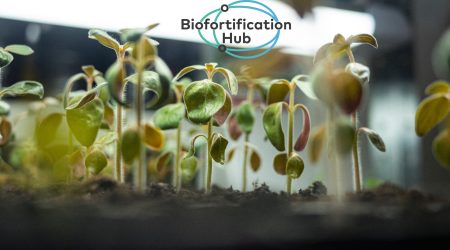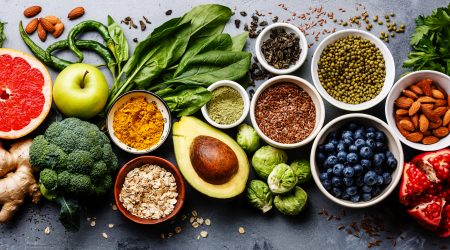Two decades of pGreen
Twenty years ago today, a new technology was developed here at the John Innes Centre, which revolutionised plant transformation and genetic engineering.
Named ‘pGreen’, this small, circular DNA molecule, known as a ‘binary vector’ was able to clone specific pieces of DNA from one plant and transfer them into the genome of a different plant. This produced a genetically modified plant, in a process known as Agrobacterium-mediated plant transformation.
The ability to do this had been in existence prior to pGreen’s launch, but the available binary vectors were comparatively large and unwieldy, making them difficult to use.
At the time Postdoctoral Scientist Roger Hellens, and Group Leader Phil Mullineaux were researching oxidative stress in plants, essentially trying to understand how plants deal with toxic side products of photosynthesis.
Previously Phil had been involved with the early work into plant transformation, such as the plant gene tool kit, and he continued to look at ways to improve the efficiency of the process. It was in this pursuit, that Roger and Phil were able to develop a binary vector which was small, simple to clone into and versatile in that it was able to carry a range of different reporter genes, in different versions; pGreen.
As Roger explains: “We set out with to create a binary vector with the size, copy number and cloning site flexibility of pBluescript – the preferred cloning plasmid at the time. We ended-up over-delivering, by developing a plasmid that was smaller and had more unique restriction sites. We also modified all the standard reporter and selection genes to make them compatible with pGreen and other vector systems”.
The technology was made Open Source, where any scientist could order the version they required. Making it open for the plant research community, means that since its development, pGreen has gone global, and is today used in thousands of laboratories, on a range of different projects.
“We also developed a website, which was not a trivial undertaking in 1996 and required us to learn HTML, but this was instrumental in making sure the plasmid and resources were easily accessible to the research community,” adds Roger.
The popularity of the pGreen system is in part thanks to its versatility. The small size of the molecule makes it easy to clone and transform into and out of bacteria. pGreen also lends itself to other plant transformation application such as clean gene technology (a way of producing selectable maker free plants).
Over the past twenty years pGreen has kept up and evolved with modern cloning techniques, for instance when Gateway cloning (a way of recombining genes into the vector) became popular many Gateway compatible pGreens were developed, including the pBRACT series used for cereal and brassica transformation by our own Crop Transformation team.
Now Golden Gate cloning has become popular as a “one tube” cloning system, pGreens have been produced that are Golden Gate cloneable such as the pGoldenGreenGate (pGGG), which was used in our recent wheat transformation paper; Agrobacterium-mediated transformation method for hexaploid wheat (Triticum aestivum L.).
The team chose to develop a pGreen based vector for wheat transformation because there is evidence that additional Agrobacterium virulence genes can increase transformation efficiency. These additional virulence genes can be expressed on pSoup, pGreen’s helper plasmid, within the Agrobacterium.
The development of pGreen continues. For example, our Crop Transformation team is using pGreen based vectors for genome editing using CRISPR/Cas technology for gene knockout. Recently, Mark Smedley in our Crop Transformation team produced a Base Editing construct for making single base changes in wheat. He hopes to be able to start “Primer Editing”, a way of rewriting genetic code within the cell, very shortly, again using a pGreen based vector.
Elsewhere, pGreen has been vital in clean gene transformation of rice (Phillipe Vain, Vera Thole and John Snape), the study of starch turnover in Arabidopsis (Alison Smith lab) and the design principles have been applied to the BBSRC-funded development of genes coding for fluorescent protein biosensors of reactive oxygen species in plants (Phil Mullineaux; now at the University of Essex)
Roger continues to use it in his work too: “The plasmid series has been instrumental in enabling translational research in challenging crop plants. We developed a specific set of pGreen derivatives (the 0800 series) that were tailored to the functional characterisation of transcription factors (genes that convert DNA to RNA).
With these tools, we were able to identify the genes involved in red-flesh apple and red-flesh kiwifruit. These discoveries, in crops with few molecular resources, were pivotal in accelerating the development and now commercialisation of these novel cultivars.”
More recently, Roger and colleagues have been able to extend the use of pGreen to discover novel features that regulate translation (the conversion of RNA to protein). Working once again in slow-maturing deciduous crops, they have been able to discover the molecular mechanism that plants use to regulate Vitamin C.
“We are now using this knowledge to biofortify commodity crops like tomato and rice,” says Roger. “These innovations will make plant-based iron more bioavailable – help address the nutrient deficiency of iron deficiency anaemia – and would not have been possible without pGreen.”



